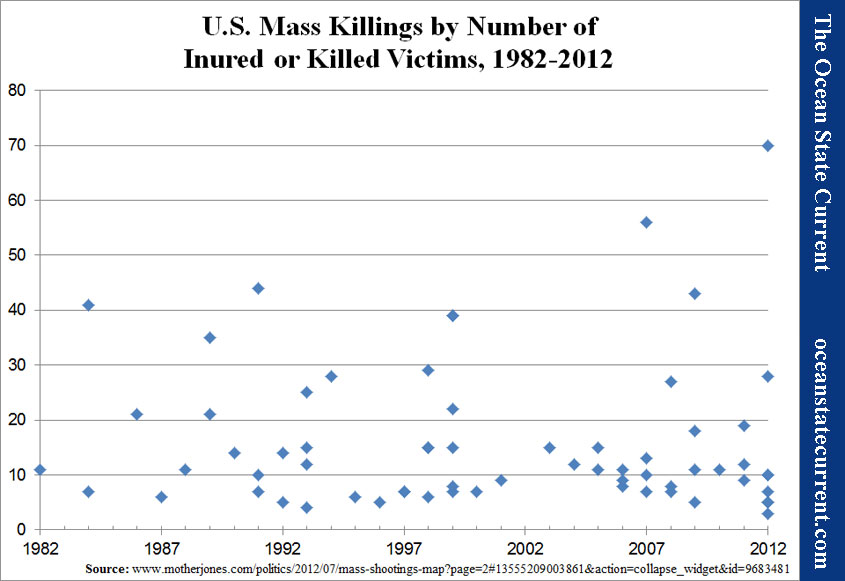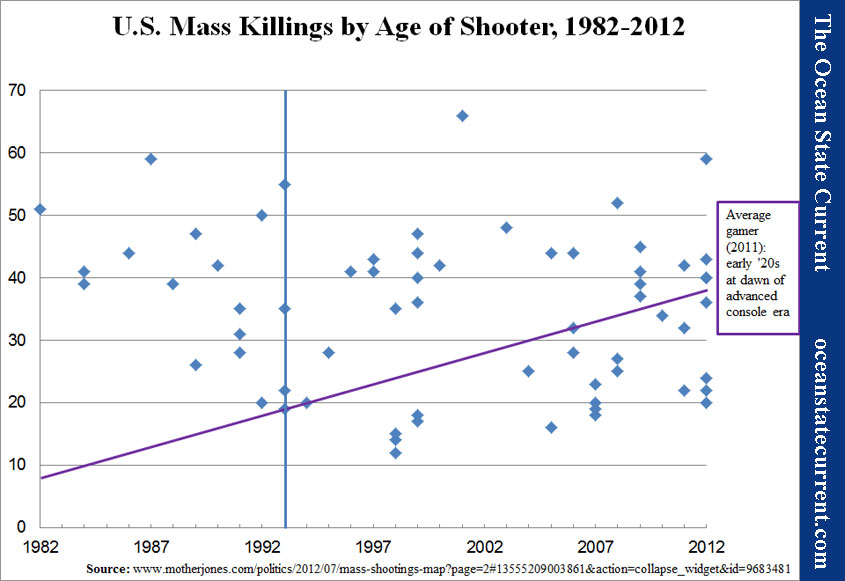Looking for Reasons
There are no words to capture the horror of the school shooting, this morning, in Western Connecticut. Beyond the wave of raw emotion that nobody who hears the news can fail to feel, there isn’t ultimately one thing on which to focus that emotion. Things that go so terribly wrong have a multitude of causes, and a society’s perspective on addressing each one has a distant reach — different principles and boundaries of appropriateness and inviolability.
So, some people turn to tears and gratitude that the whims of fate haven’t touched them in a certain way, thus far. Some look to name the illness that is necessarily behind a final snap. Some rush to blame the circumstances, whether the security of a school or the instruments of the act, in this case, guns.
Because we’re emotional, the talk can get heated, as blame leans toward areas of sensitivity. On mental illness, we move into the delicate debate about how much we should drug each other into comfort, or even complacency with life’s edges. We move into political philosophy, regarding the best strategy for ensuring that as many people as possible can get as much psychological help as they need. That is not by any means an easy question.
More vicious, when it comes to shootings, is the wrangle over guns. Charts of “Deadliest U.S. Shootings” circulate, with outlines of people and sketches of the weapons used. Those who do the circulating insist that there is some link between the weapons and the deadliness in recent years. New York Mayor Michael Bloomberg is calling for “immediate action” to, at least in some degree, disarm the American people.
If I may offer a brief opinion on that prescription, I’d suggest that a rational response would have to take in a broader picture of violence, as gut wrenching as the topic inevitably is. This list of school massacres gives an indication of the horrific variety, both in place (implying different laws) and in method. The deadliest in the United States killed or injured over 100 people with bombs. One involved an insecticide sprayer converted into a flame thrower.
But it is more relevant that by far the worst — with over 1,000 killed or injured — was the invasion of a school by a pro-Chechen militia in 2004. Somebody with the ability to stomach the study could expand the search, but I’m willing to move on under the assumption that the most terrible massacres in any era of history are perpetrated by governments or similarly organized and un-preventably armed groups.
As this post has already made clear, my own coping mechanism for terror (at least at a little distance) is analysis. No doubt, people who cannot procure guns cannot use them to kill. But there will always be those who can acquire them, and there will always be alternative weapons for those who cannot.
But what of the apparent frequency of larger-scale mass shootings in the United States? The insinuation is that the availability of rapidly-reloading weapons has the number of victims on the rise. We could point to the sketches of guns noted above and observe that handguns are by far the most common and that there does not appear to have been a sudden explosion of the scarier assault rifles.
More telling, though, is the following scatter plot of victim counts for every mass killing since 1982, as collected by Mother Jones magazine:
Every life is so precious that it would be a grisly business to draw any lines, and it’s true that the two highest dots are within the last few years. One of them (Virginia Tech) involved handguns, while the other (Aurora) was so harmful based mainly on the killer’s choice of setting, as also indicated by the uniquely high proportion of victims who were injured, but not killed.
Still, the count of attacks with very high numbers of victims has not increased notably, over the last three decades. More disconcerting is the increasing frequency overall, with an average of one per year in the first decade, two per year in the second, and three per year in the third.
But that’s not the most disconcerting trend in these numbers; the ages of the shooters provide that. Through 1997, mass shootings were mainly perpetrated by middle-aged men. Of the 23 attackers, only four were 24 years of age or younger, while 10 were 35-44. From 1998 through 2012, the number 35-44 increased 1.5 times, to 15, and the number 25-34 increased 1.75 times, to seven. But the number 24 or younger increased 3.5 times, to 14.
In very rough terms, the middle-aged monsters have increased at just about the same rate as all men in that age group. Meanwhile, the number of men 34 and below has not increased much at all over recent decades, and yet, youthful alienation has caught midlife crisis as the backdrop for monstrosities.
The imputation of psychological causes oversimplifies, of course. With such a small number of killers, the causes are sure to be highly personalized. And even if they would enable statistical analysis, there would be layers of reasons for the apparent change in demographics.
Some commentators would likely suggest a biological shift in our population, with more young men having diagnosable problems. Others would cite the feminization of education and childhood in general. Perhaps the truth is a mix — as our handling of childhood moves away from gender specificity in general and cultivating masculinity in particular, the social mechanisms that helped boys avoid the pitfalls of their biology are eroding with nothing to replace them.
And perhaps we’re twisting these deep, psychological factors even more through other means. One that comes to mind is the proliferation of graphic entertainment, with first-person-shooter video games most representative. (Although, the rise of Quentin Tarantino–style movies in the early-to-mid ’90s would fit alongside them, as would other cultural markers.)
To the following chart of the shooters’ ages, by year, I’ve added a vertical line to represent the release of the genre-sparking game Doom in 1993 as well as a line representing the age, over time, of the average gamer in 2011 (which was 37, that year).
It is beneath that line that we find young men who spent their formative years in a culture of expanding superficiality and cynicism, with entertainment that would have enraged parents — as well as the previously more engaged community —just a short while ago.
By no means am I suggesting that banning such games (movies, etc.) would be a reasonable response to this morning’s atrocity. I’ve no evidence that young men who turn out to be killers have an unusual passion for them, or even that any particular murderers have ever played them.
But there’s something that’s gone sour in our culture, and having aged almost exactly along that purple line, it seems to me that taking a clear-eyed look at our entertainment would give us some clues about the deeper problems. That the vast majority of our children (thank God) do not have the degree of mental illness to take up a gun in aggression does not mean that they are not harmed by the same influences.
As with guns, our other freedoms require a fortitude of character. We allow our more-responsible children more latitude, and we should cultivate a culture that helps us all to be more responsible as adults.
I suspect that changing the way we live our lives — especially how we order and interact with our families — would do more to curb the disaffection, fear, and violence in the world than further limiting Americans’ ability to protect themselves. And as frustrating as it may be, that sort of strategy cannot be legislated or otherwise imposed without oppression and, ultimately, even more violence.






